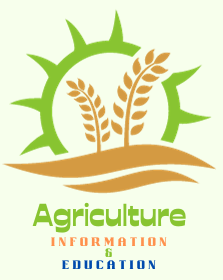
Introduction:
In the second quarter of the fiscal year 2023–24, India’s economic situation was uneven. The economy expanded at a robust 7.6% annual rate overall, but the specifics were crucial, particularly for the agriculture industry. A concerning 1.2% decline in agricultural output was indicated by the GDP figures, raising questions about India’s food security.
An Overview of the Economy:
Boosted by more investments, non-agricultural industries accounted for the majority of the second quarter’s 7.6% economic growth. Still, the downturn in the agriculture industry suggested deeper problems that might have far-reaching effects.
Meteorological Difficulties and Crop Production:
The first of the many difficulties facing the agriculture industry was the erratic rains that occurred between October and November, when Kharif crop harvesting was most important. While in several areas there were sudden
Production Forecasts and Reality:
The Indian Agriculture Ministry reported a 3.7% fall in actual production despite an expansion in cultivation area, confirming the U.S. Department of Agriculture’s forecasts of a 4% decline in paddy production. These differences between expected and actual results highlight the agriculture sector’s volatility and unpredictability.
Reaction and Policies of the Government:
A number of actions were taken by government policymakers in response to the agricultural crisis. These included stocking limits, mandatory stock declarations by agri-processors, and prohibitions on non-basmati and sugar exports. These steps showed an awareness of how vulnerable agriculture is and a determined attempt to lessen the looming threat to food security.
Population Dependency on Agriculture:
Agriculture accounts for about 40% of India’s employment, either directly or indirectly, and is essential to the country’s way of life. A decline in agricultural output puts programmes like the Mahatma Gandhi National Rural Employment Guarantee Act (MGNREGA) under further strain, which might result in a rural crisis and jeopardise food security.
Increasing Food Costs and Forceful Measures:
India was already struggling with growing food costs, which were made worse by the decline in the country’s agricultural GDP. The robust food protection initiatives of the government, such giving free rations to 80 crore people for a longer period of time than December, demonstrated a proactive approach to addressing the growing issues.
Harvest Challenges and Food Reserves:
The sharp illustration of the compounding impact of repeated years of bad harvests in both the Rabi and Kharif seasons came in August when India’s food reserves reached a six-year low. The circumstances suggested possible systemic problems and called into question the transparency and integrity of the government’s food production figures.
Synchronised Dataset Analysis:
When comparing GDP data with other important datasets, such as national water reservoir levels and monsoon patterns, a more serious issue surfaced. The synchronised research raised questions about the accuracy of data on food production by pointing up possible inconsistencies and a lack of openness in the government’s data collection and reporting procedures.
Food Security Concerns:
The decline in the agricultural GDP was indicative of a more serious and systemic production problem rather than just a statistical anomaly. Beyond projections of crop harvests, the worries raised grave doubts about the country’s capacity to guarantee food security for its sizable populace.
Global Hunger Index and Malnutrition:
The country’s rising rates of hunger and malnutrition were highlighted by the global hunger index, which supported these worries. The combination of elements, which included production reductions brought on by weather-related difficulties as well as possible problems with data transparency, painted a bleak picture for India’s food security both now and in the future.
Outlook and Uncertainties:
The overall picture for food and agriculture is not good, even though it is too soon to estimate the full impact on food inflation and security. The country’s many problems were brought to light by the sharp decline in the agricultural GDP, which called for comprehensive and well-thought-out actions to prevent impending disaster.
Conclusion:
In summary, more complex factors than just economic indicators are at play in the decline in India’s agricultural GDP. It touches on the core of the country’s food security, impacting the lives and means of subsistence for millions of people who depend on agriculture. Although the government’s response is praiseworthy, it still needs to address the underlying issues, such as production constraints, weather-related uncertainty, and the requirement for transparent and accurate data in order to develop long-term sustainable solutions.

nice information sir
Thank you sir
Very Informative post .
If you can throw some light on hunger Index. Why I asked this that because international agencies who are monitoring it shows India Hunger Index is lower than Pakistan ,where people does not have sufficient food to cater to their people , still hunger index is above India.
Thank you for Feedback